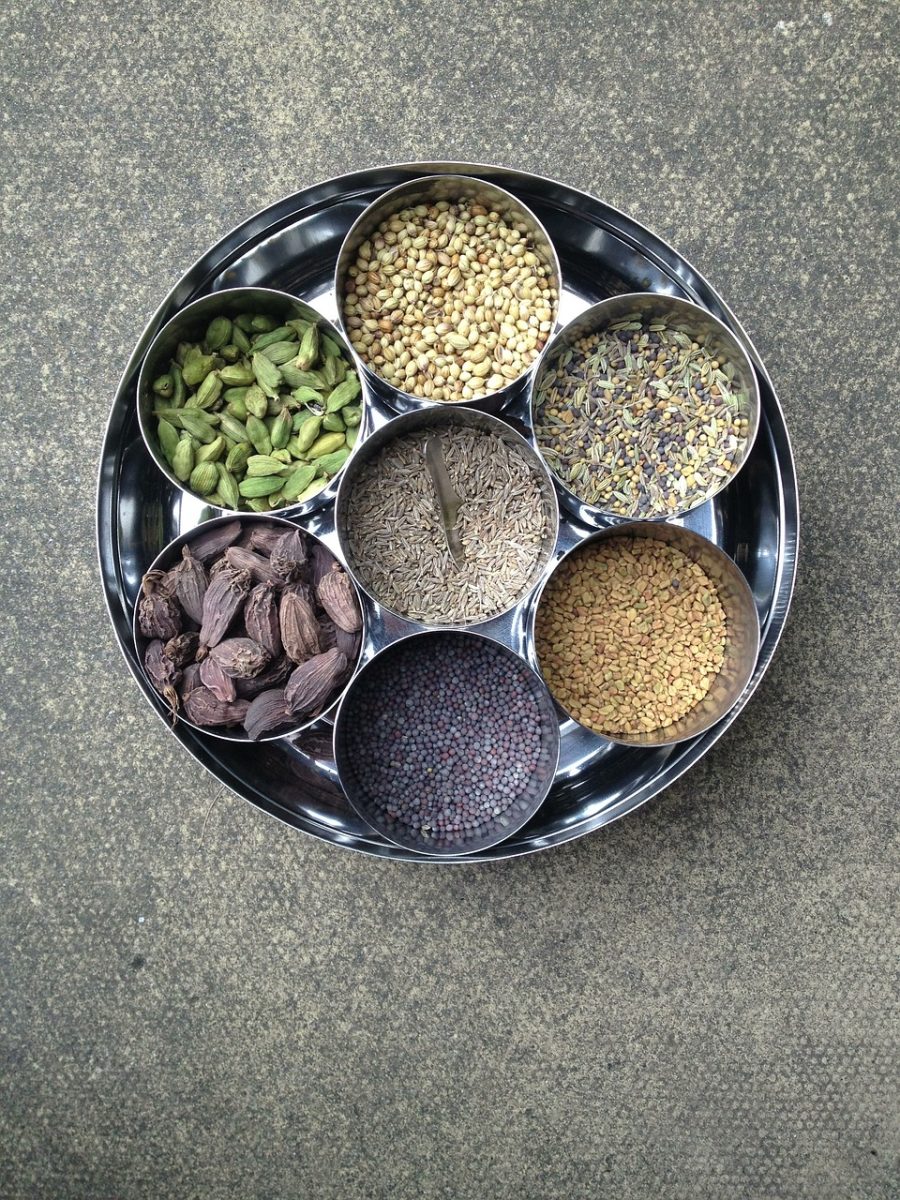The fluorescent lights flickered multiple times before returning to shine their yellow-brown color into the small kitchen. Small chunks of potatoes were on the cusp of burning just as fumes of smoke rose to the ceiling from chai spilling over the lips of an ancient metal pot. She quickly reaches for a handful of cumin seeds and a few curries leaves from a cupboard to mix into the side dish as the chai gets transferred from the stove to a small tumbler. As the potatoes cool down, my mom packs my lunch for the day: A bowl of curd rice (which refers to rice mixed with unsweetened probiotic yogurt) is rapidly spilled into an old Tupperware box, topped with a hefty side of roasted potatoes. She reminds me to finish my lunch at school, slowly sipping on the freshly brewed tea she made for herself in ten minutes. Once again, I do not pick a fight today about not having an “American” lunch and resign myself to eating lunch alone.
To my mother, the curd rice would taste heavenly; the small bursts of sweetness from the pomegranate and cashews would complement the small chunks of green chili and ginger. However, opening my lunchbox to me would act as a repellent to those sitting next to me, promptly encouraging them to get up and leave when I didn’t open a packaged Uncrustables or fruit snacks. My parents refused to feed me this way. No matter what the dish was, the aroma of my food would carry itself through the lunch room and effectively build a wall between my peers and me. So widely related to, in 2016, the term “Lunchbox Moment” was coined to describe the shared experience of people of color or children of immigrants bringing lunch to school that is “non-white.”
The encounters in the school cafeteria marked the onset of my assimilation into the unspoken intricacies of American Culture, grappling with rules dictating what is deemed acceptable and what is not. Beyond the simple desire to stand in line for pizza in a cardboard box and some watered-down chocolate milk, these interactions made me resent the culture that defines my identity. I embraced the mainstream white culture as the default, failing to recognize it was not the norm I had to mold myself into. So, as I slowly started to throw the home-cooked meals away at school, I was truly just shoving down my throat ways for myself to become more palatable to white culture (and some very dry bread).
The subconscious acceptance of these norms and stereotypes would only lead me to inadvertently measure my worth against a standard that didn’t inherently include or acknowledge the richness of my heritage. Judged, through a narrow lens of presumed superiority, foods outside of the mainstream culture have been deemed unhealthy. Of course, until it becomes the new trend, the new exotic food to try and post on Instagram. Don’t get me wrong–I’m all for people experiencing cultures outside of their own, but having to wait until a cultural practice or food gains trendiness or acceptance in mainstream culture to be deemed ‘normal,’ is just disrespectful.
If you’ve ever tuned in to an online cooking tutorial, you’re likely familiar with the meticulously organized table adorned with countless small bowls, each holding precisely measured ingredients. My mother’s culinary approach stands in stark contrast. There are no measurements when cooking her food, more of a pinch of everything in our kitchen cabinet and Anjara Petti (translating to 5-compartment spice rack in Tamil), expertly eyeballed to perfection. My mother’s cooking can’t be reduced, to just fuel for the body, mere sustenance. Her recipes are a living testament, a narrative etched in every flavor, bridging the gap between this land and her home.
At times, family dinners involve meals served on freshly harvested banana leaves from our backyard, a common practice in South India. The floor becomes your new dining table, and you savor heaps of white rice with Sambar (a lentil-based vegetable stew), Rasam (a soup-like dish), multiple sides of fried or sauteed vegetables (Poriyal), and some kind of desert like Kesari or Payasam. Most importantly, these foods are savored without using utensils; instead, our hands, specifically the right hand, serve as the ultimate culinary tool. Far from being bizarre and primitive, these practices are customary in not only Indian culture, but the preferred way to enjoy a meal in parts of Asia, the Middle East, and Africa. According to my mom, Mythili Murugan, “Eating with our hands is a sign of respect to god, and the host providing the food. More importantly, ancient texts believe that each finger represents the five elements of Earth.” From the Ancient Health System based on the Vedas, Ayurvedic texts suggest that the nerve endings in our fingers boost digestion. The practice, however, was widely deemed “improper” during times of colonization, deemed uncivilized by Anglo-American cultural practices.
It is in my mother’s kitchen where I found myself shaping who I am to fit “American” culture, but it’s also where I found the courage to challenge ethnocentric judgments through food. My parent’s unwavering indifference to mainstream, White culture allowed me to realize that the only culture that I had to mold myself into, was the one I created for myself. Best said by Dietitian Maya Feller, “Learning to respect the intersection of food, culture, and history means respecting and acknowledging that cultures that exist outside of whiteness are valuable.” In a country that cherishes diversity as its cornerstone, nobody gets to decide that my lunch smells too strong, is too different, or too much.















